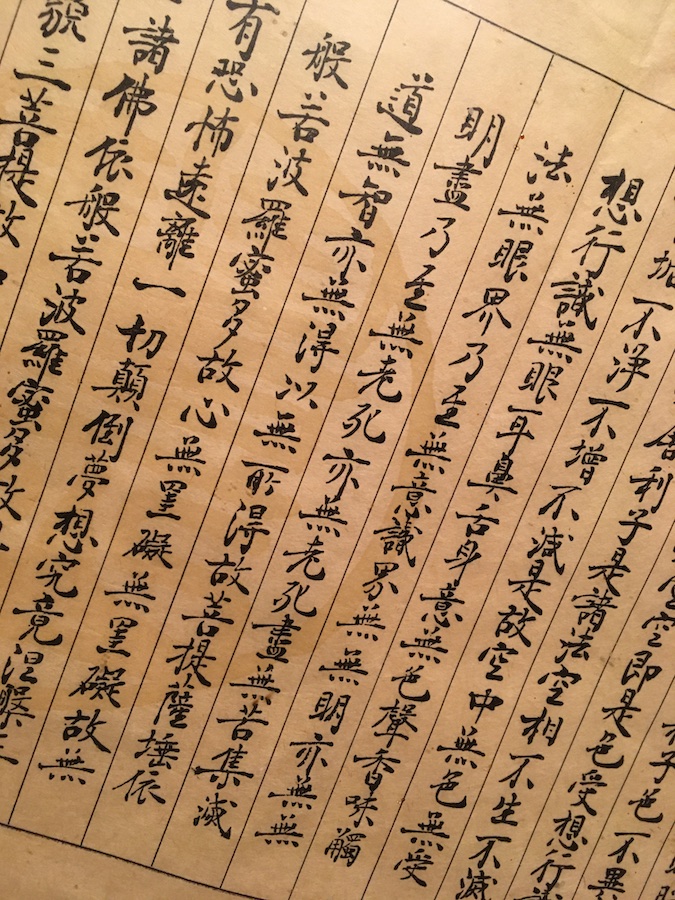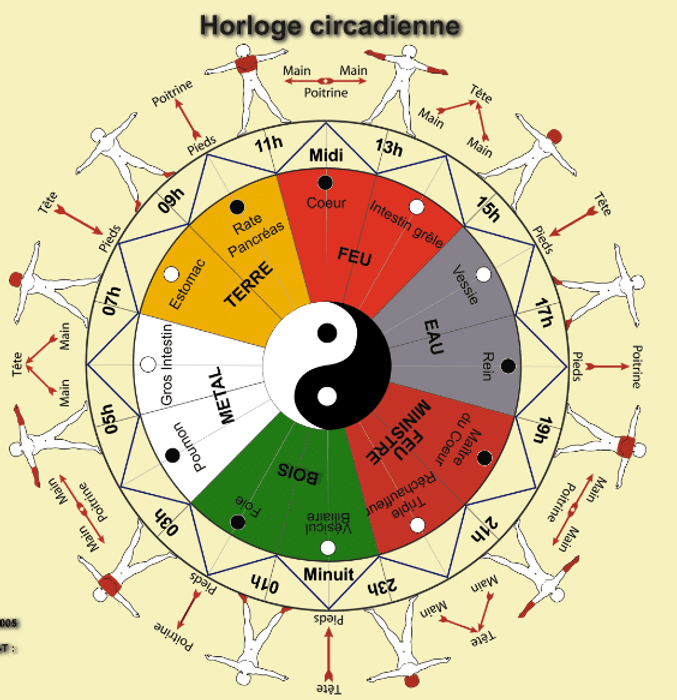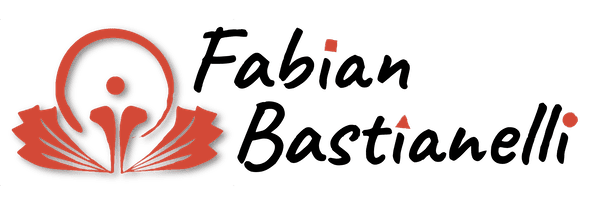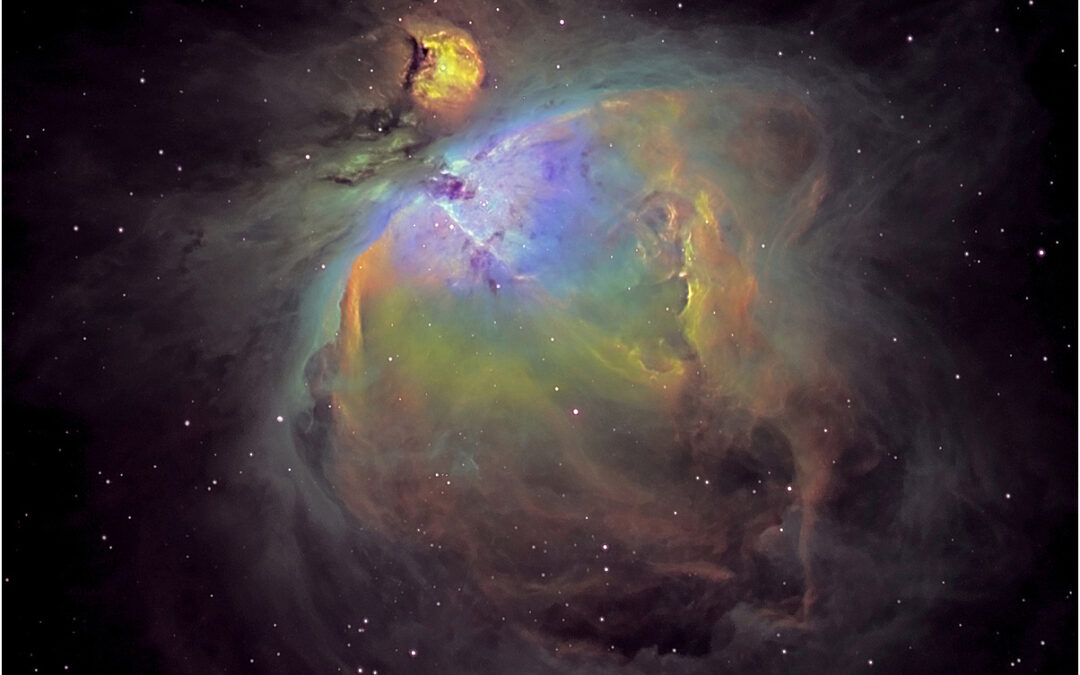When I was a student beside Kawada Sensei, we regularly talked about the Zen that I practice. One day, Kawada Sensei gave me an Hanna Shingyo, the heart sutra, calligraphed in Japan by a monk. This text, much appreciated by the Japanese, is a sort of summary of the Buddha’s thought relating a discussion between him and Shariputtra, one of his disciples and it remains for me a basis for reflection.
Like any culture with deep and multiple roots, Japan is an ecosystem in its own right. There is its insularity, the rich and diverse influences: the Ainu, the Chinese culture, the Western contribution and so many others which we will remain opaque. To practice shiatsu or any other Japanese art, it is necessary to better understand this ecosystem, otherwise we are only applying a technique without the finesse of what underlies it. This is the difference that Stéphane Cuypers makes in his book “Shiatsu, un rat japonais“. This is what differentiates an art from a technique.
What the Buddha tells us
A particular phrase in this sutra catches my attention for our practice:
“Form contains emptiness, emptiness contains form. Form is emptiness, emptiness is form.”
In texts recounting discussions with his disciples, the Buddha says that emptiness does not exist, that it is a relative notion. There can be “an emptiness of” but to say “it is empty” is not quite right.
If I take the example of a classroom without students, the teacher might say “it is empty”. In this case, it would mean “it is empty of students” because this room may be full of benches and chairs.

“Emptiness is form”
Let’s take the example of a plot of land here. This surface may seem empty. If I apply the previous reasoning, the land is empty of houses, empty of cultivation, empty of trees or animals, yet this “emptiness” contains “the form” or, in any case, the potentiality of the form: this piece of land could accommodate a house, grazing animals, a plot of wheat. The earth of the land, by digging a little to find the clay, is also the potentiality of becoming form in the hands of a potter, etc.
“Form is empty”
Regarding the form, it is the same reasoning.
Take the example of a bowl filled with water, if we empty it of its water, is it empty?
In a certain sense, yes, it is empty of water. In another, no, it is full of air. This fullness is just as relative.
The bowl has been shaped in such a way as to delimit a space which is a container that can accommodate content.
The empty bowl is also full of other elements that are no longer visible: it contains the earth of the clay which gives it its shape, it contains the water which allowed its shaping, it contains the fire which cooked it , it contains the hands of the potter who gave it its shape.
Back to shiatsu
The empty-full concept usually associated with shiatsu is kyo-jitsu.
First of all, kyo-jitsu is not and cannot be a theory. It is above all a feeling, the feeling of life flowing under your hands. Masunaga makes this very clear by explaining that kyo-jitsu is resonance and its afterglow felt in an area, on a tsubo. Experiences also pushed by Kishi Akinobu, Masunaga’s assistant, through the Seiki Soho which makes you feel that the resonance is pure feelings without intellectualization.
jitsu
Masunaga explains that the jitsu ideogram is made up of several things: a house, a fully planted rice field and the seashell that was the currency before. In its general understanding, it would be “a house that is full of riches, in abundance”, hence the often used translation of “fullness”, but is fullness excess? This jitsu character also means “true”, “truth” or “seed”.
A house full of wealth being a container in fullness, it could also mean “a seed in its full germinative potential” (Bill Palmer also speaks of ripe fruit).
Kyo
Its ideogram is composed of the head of the tiger and a funerary mount. Masunaga says it is the exact opposition of jitsu, i.e. lie, pretense, insufficiency. His overall understanding could be “what is given to see does not correspond to the deep reality”. So the vacuum shortcut. In the same spirit that “fullness” is not excess, “insufficiency” is not “empty”.
However, returning to the vision that Buddhism has of the full and the empty, kyo is not empty. Kyo is empty of something that is not visible at first sight.
This double key to understanding is very interesting. Does a household apparently living in opulence not hide shortcomings?
Thus, I quite like the idea of understanding jitsu as apparent truth and kyo as pretense. One having a light aspect, the other shadow, like yang and yin.
Let’s not forget that Masunaga had a fabulous spirit of research and that he tried to put into words feelings, intuitions, global concepts. His search for understanding also led him to Western psychology. In this, there is an aspect that also helps to better understand kyo-jitsu: each person shows one aspect of himself and keeps another secret, for some reason. A life experience can become decisive, affirming or enclosing, in the development of a personality.
The kyo, origin of jitsu.
” The sun is rising,
The birds sing,
The shadow runs to take refuge at the foot of the wall. »
In its aspect of movement, shadow and light give way to each other, day breaks giving way to night which will fade away to let the sun shine. This is how the sequence of days turns… So I think that kyo is not a emptiness, it is something that needs to be brought to light, whereas jitsu is very visible and could be calmed down a bit. Could this be a yin-yang energetic reality? I let you feel…
In the circadian clock, we can see that a meridian reaches its full potential (jitsu) at a certain time, while another is in its minimum (kyo). As a breath is the continuation of exhalation-inspiration, kyo-jitsu can be useful for each other.

When we touch a body, we first touch someone. This person cannot be empty since they are filled with life and experiences. So, once again, this empty-full notion can only be relative. Isn’t it risky or dangerous to dare to say to a recipient: “your kidneys are empty”. They cannot be empty since life is there. Undoubtedly, there is an imbalance that comes “to lean on the kidney”.
So, in our practice, let us always keep this relativity in mind. A person comes to see us to feel better. There are imbalances that we are going to work on. We are all out of balance. Life, walking is a series of controlled imbalances. Through shiatsu, we bring fluidity and flexibility to the movement of life.
For me, kyo-jitsu is this movement that we can feel from what is deep, which can mature to germinate and requires light to flourish.
In my practice of extraordinary meridians, I regularly encounter this kind of case: someone comes to me with an apparent symptom but I feel that a movement is coming from within. My role then is to soften the symptom, when possible, and to leave room for this movement which pushes from the depth towards a highlighting. The receiver will then be able to become aware of what is hidden in him and would like to come out, to be digested and evacuated.


Recent Comments